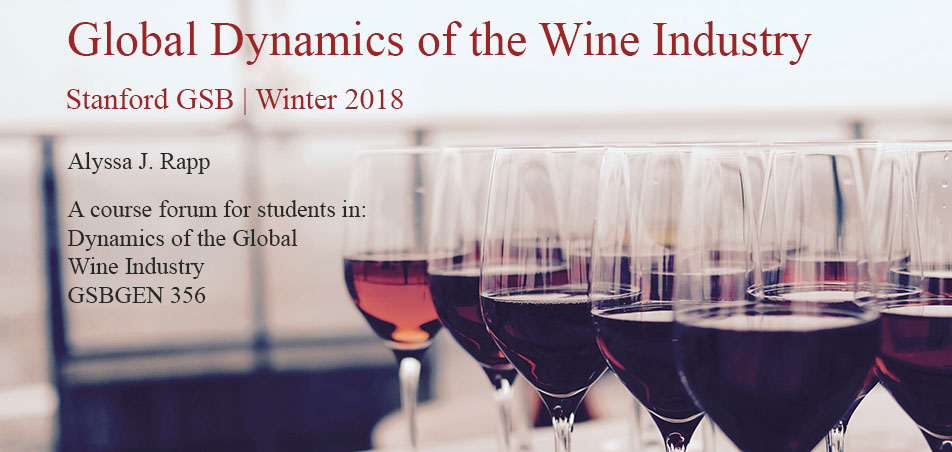In exploring the food and wine culture in Los Angeles this
weekend at one of Venice’s hot restaurants, Rose
Café, I was struck by the question one of my dinner mates asked the in-house
sommelier – what is the best value wine you have on the menu? Being the
value-capturing, business school
students that we are, we thought this question to be straight forward and to be
interpreted as what was the cost conscious yet delicious white wine option on the
menu. This was not how the sommelier interpreted the question though as the
first wine suggestion he gave was one with a $110 price point that was not
listed on the menu and was supposedly the last of its kind in the restaurant
wine cellar.
Surely there was a large sales component that played out in
this interaction but it did lead me to consider what value means in this
industry. Should values in taste differ amongst low-priced versus high-priced wines?
And in a restaurant scenario how does one confer their preferences without ending
up with >$100 suggestions? What callouts on a menu might connote quality?
Or, should one do what I’ve recently done and research the ratings of every
wine that sounds remotely interesting before buying?
In an article by the HuffPo,
How
to Order Wine at a Restaurant: Avoid Embarrassment, Save Money, and Pick
Something Divine, Peterson details a couple quick tips that I’ll have to
put into action next time I’m perusing the wine menu: 1) Don’t be afraid to go
for the cheapest bottle on the list, 2) Avoid the house wine, and 3) Don’t fall
into the anchoring effect which occurs when you see expensive wines listed and
abandon the price point with which you’re comfortable.
On the ordering side, the most important things to convey to
your server or sommelier
·
Red or white (or rose ;))
·
New World (fruit-forward) or Old World (earthy)
·
Body of the wine (light, medium or full)
·
Price point
Peterson suggests a conversation like this: “Hi there! I’d
like to order a bottle of red wine to share for the table. We generally prefer
medium-bodied new world wines that are nice and fruit-forward. Brian hates
Pinot Noir (blasphemy!), but other than that we’re totally flexible. I am
considering a bottle like this (point to price), but would love to hear your
suggestions based on our preferences.”
After this bit of research I’m feeling more comfortable ordering
my next bottle of wine while out. Any fun(ny) wine ordering stories out there? Any ordering tips
not mentioned would also be very received! I’m trying to become a wine ordering
master by end of quarter ;)

I've definitely felt pressured by restaurants to purchase a more expensive bottle than I was looking for, on multiple occasions. I'd concur with Jessica that we as paying customers should not cave in to the pressure.
ReplyDeleteAs any sommelier would tell you, it is 100% their job to make their guests feel comfortable and at ease. If the sommelier does not have information on price points already, they should recommend bottles across low, mid, and high price points. The customer should absolutely feel free to request suggestions in a certain price range (or point to the desired price as Jessica suggested in the article).
At the end of the day, remember that the sommelier is there to serve YOU, and it's their job to make your experience an enjoyable one.
Also don't ever order the 2nd cheapest bottle! Restaurants are aware that consumers don't want to look cheap and order the cheapest bottle, so they mark up the 2nd cheapest.
ReplyDeleteThanks for this post. I only recently started drinking wine but will definitely keep this in mind next time I order. I'm naturally a skeptic, so am not convinced that wine price and quality have much of a correlation which makes me even less likely to want to go with the expensive version. I read a few articles this week on research done on the ability of experts to discern the quality of wine. A couple experiments showed that wine raters would rate the same wine in relatively wide ranges when doing blind taste tests. Given this subjective nature of quality and price, I'm all for choosing the type of wine you want and then going for a price point that makes sense to you. It be fun if we did some blind taste tests in class with the students and guests. Wine obviously has much more varied flavor than vodka, but ever since I did a blind taste test of vodka in marketing class and failed when I thought I'd pass, I've wanted to see experts do blind taste tests of wine.
ReplyDelete